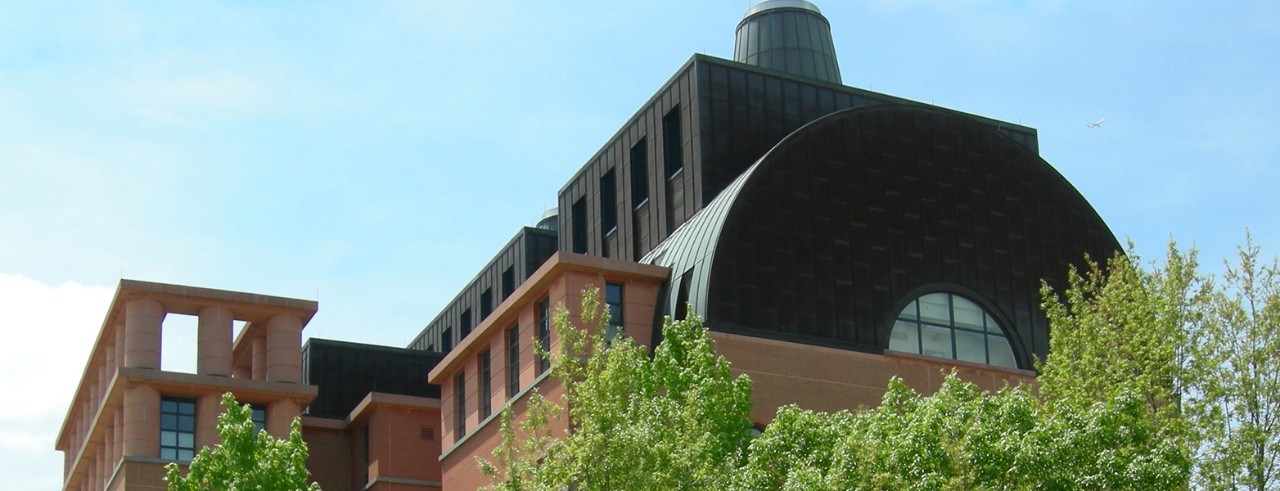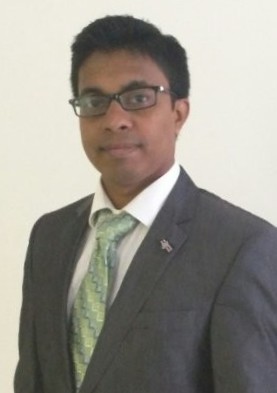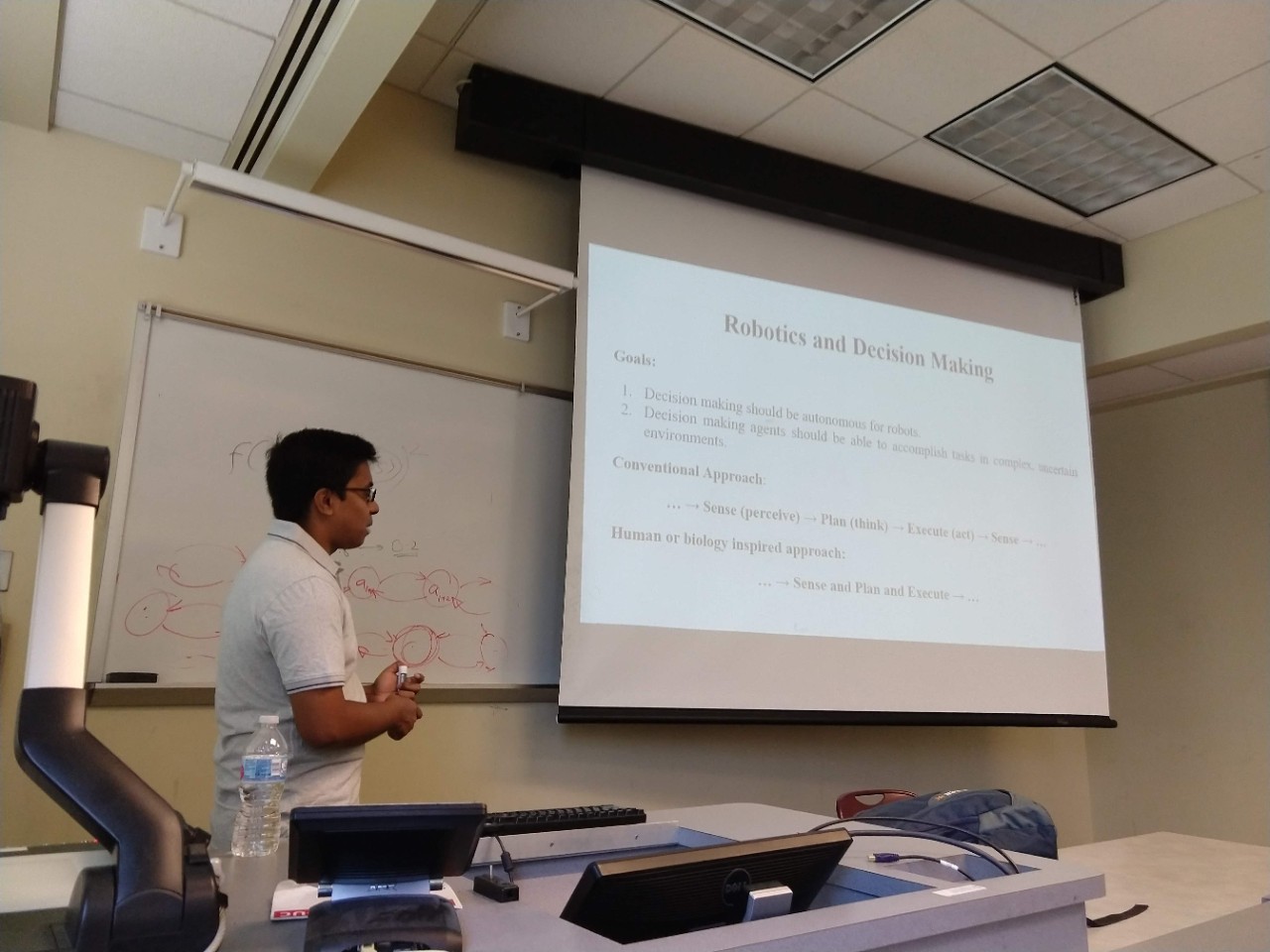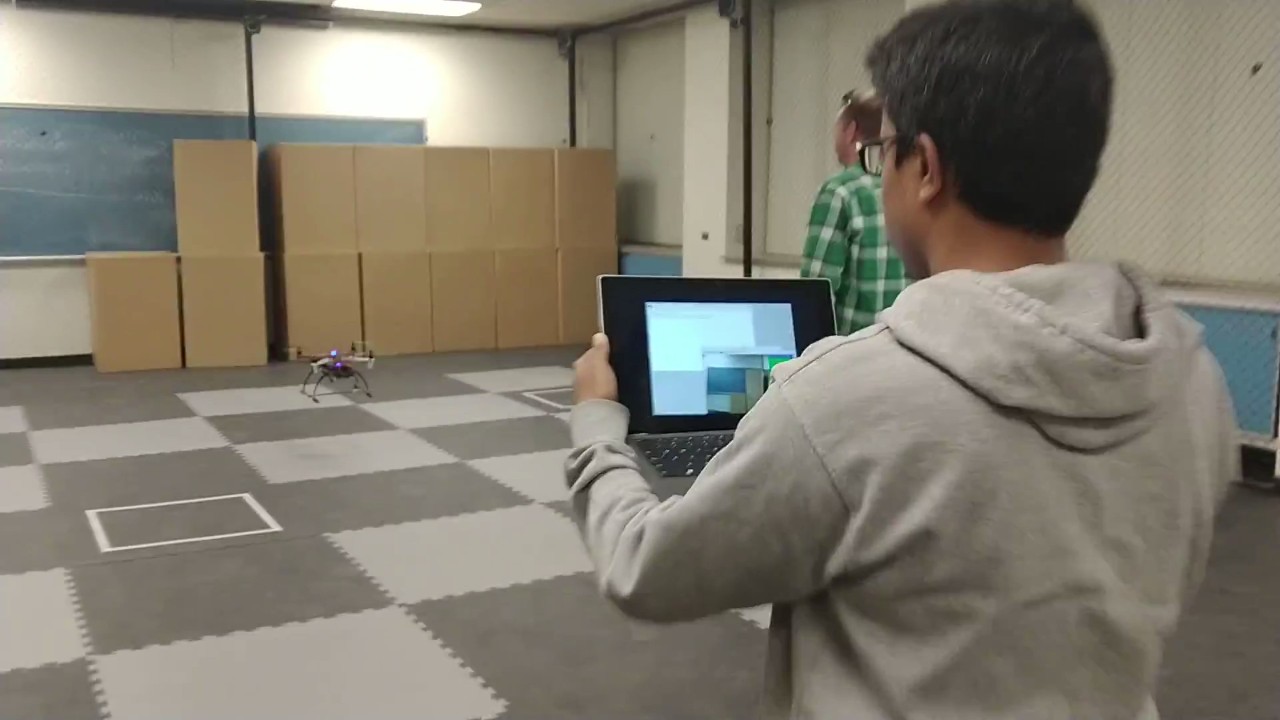
UC graduate student develops modular learning in robots
Graduate Engineer of the Month combines curiosity with teaching and important communication skills
Aditya Deshpande, a Ph.D. student in mechanical engineering, has been named the Graduate Engineer of the month for May by the College of Engineering and Applied Science at the University of Cincinnati.

Aditya Deshpande
Deshpande focuses his education and research on robotics. More specifically, his fascination with the human mind led him to the field of artificial intelligence. His ultimate goal is to create robots that can automate tasks and eliminate mundane, repetitive chores for humans.
He is working on a form of modular learning that will gradually teach a robot to do incrementally more complex tasks. A robot will learn simple tasks first, then tasks that are increasingly complex.
After earning his bachelor’s degree in mechanical engineering from the Maharashtra Institute of Technology in Pune, India, Deshpande was seeking a graduate program that offered research, resources, and the right people to propel his career. He found all of those at the University of Cincinnati.

Aditya Deshpande lectures students on robotics and decision making.
“At UC, I was able to find good research opportunities, resources, and faculty for my transition to a career in robotics,” said Deshpande. “I was also awarded a University Graduate Scholarship by the University of Cincinnati. This made UC a natural choice for my masters and doctoral studies.”
While at UC, Deshpande gained vast experience in research and teaching, excelling in both. He designed and taught Robot Design Control to a class of 60 undergraduate and graduate students. In the lab, his creativity and drive have resulted in several awards.
He earned the UC Research Council research award. He was a lead author in proceedings of the 2018 American Control Conference, and won the Video in Science Award at Dayton-Cincinnati Aerospace Sciences Symposium for a video that explained how processing drone images using a convolutional neural network and utilizing intermediate layers can identify different features of the images.

Aditya Deshpande conducts research on a drone.
Deshpande gave thanks to several faculty and offered advice to fellow students.
“My journey as a graduate student at the University of Cincinnati has been very rewarding,” said Deshpande. “I will first and foremost like to thank my adviser, Dr. Manish Kumar, for his constant support in this fantastic journey.”
“I would also like to thank Dr. Ali Minai and Dr. Sam Anand for their invaluable inputs. UC is a wonderful place that has an inclusive environment across all pathways and campuses. I will encourage all the fellow students to take advantage of the resources and various research opportunities at UC to transform their ideas into impact, improving the way we live, work and grow.”
After earning his Ph.D., Deshpande will take his skills, creativity, and drive into a career that includes both research and product development.
Featured image at top: The Engineering Research Center at the University of Cincinnati.
Next Lives Here
The University of Cincinnati is classified as a Research 1 institution by the Carnegie Commission and is ranked in the National Science Foundation's Top-35 public research universities. UC's graduate students and faculty investigate problems and innovate solutions with real-world impact. Next Lives Here.
Related Stories
UC Honors students gain hands-on research experience
April 1, 2025
The Biomedical Research and Mentoring Program is open to any University Honors Program students. The faculty mentors are typically from UC’s College of Medicine or Cincinnati Children's Hospital.
UC engineer applying generative AI to smart manufacturing
March 31, 2025
Manish Raj Aryal, a PhD student in mechanical engineering at the University of Cincinnati, is working on revolutionizing manufacturing systems through generative AI, leveraging AI systems to develop manufacturing assistant chatbots. He came to UC for his master's degree and continued researching as a PhD student. He was named Graduate Student Engineer of the Month by the College of Engineering and Applied Science (CEAS).
Exploring careers in robotics engineering: A path to the future
March 28, 2025
Discover robotics engineering careers: skills, paths, and opportunities in manufacturing, healthcare, and space. Explore salaries and how to start at UC’s CEAS.
